environment Gardening Personal: DIY Gardening sustainability vegetables
by Warren
4 comments
Meta
SiteMeter
Brighter Planet
My Big Fat Garden Project
It’s Independence Day! And I’m just going to brag on my garden a little.
Our little household will never be able to get off the food grid entirely (can’t grow rice in the Boston suburbs! No room for the spaghetti trees!) but we’ve been getting better at it every year.
Let me describe our layout. We live on the side of a hill. 47 steps lead from street level to our front door. When we bought the house, the front yard was a very steep slope, covered with weeds and debris. There is a garage at street level, inset into the hill. When we bought the house, the garage had a peaked roof in wretched condition.
I started a garden four years ago. It took a lot of work. The weeds and debris had to go — and individual planting beds had to be made out of rock, rubble, and concrete. I mastered the technique of building a leaky stone structure (dig shallow ditch & fill with gravel; plop rocks and rubble on top of gravel; slap concrete on top of rocks and rubble; allow to dry; add more rocks and rubble; add more concrete; repeat until you’re at the height you want, then add soil) and at this point have fifteen or sixteen fully operational planting beds in my front yard.

My front yard during the off-season. Note the drip-irrigation hoses.
Once I got the beds made and filled with organic dirt from our local garden store, I started growing vegetables. And the first year’s yield almost completely eliminated our need to buy produce for about nine months. That was encouraging! I hadn’t learned how to can vegetables at that point, so I was freezing them using a vacuum-pack machine. Good stuff.
I integrated rain barrels at each corner of the house and a drip irrigation system. Every year in spring I have to go around the house, patiently checking for leaks and breaks. When the system is coupled with a timer at the hose outlet, watering is regular and absolutely consistent.
I never felt a particular call to gardening before. Some people are drawn to it — not me. But as I read the news on climate change, it became increasingly obvious to me that a collapse of the economic system and all the subsystems that depend on it is depressingly likely. I decided that if I had to learn to grow my own food, I should get started before the system crumbled and my zucchinis and carrots were actually all I had to keep my family fed. That is to say, I wanted to start making gardening mistakes; by the time I needed real skill, I would have made lots. That’s how you gain skill: by making mistakes.
Here is the same view of my front yard, with plants. Can’t see the irrigation hoses anymore!
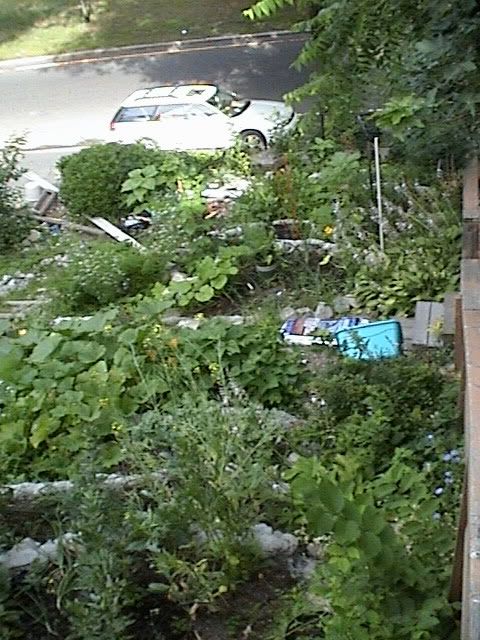
A few years ago I had a vision. A perfectly ordinary, secular type of vision — I was looking at the garage, and wishing it had a flat roof so that I could put planters on it. I’ve been using these dandy self-watering planters from Gardener’s Supply Company, and I love them — huge yields of vegetables and very healthy plants. The water is stored in a reservoir underneath the potting mix, and seeps upward via capillary action. The plants are watered from below; almost no water is lost to evaporation.
I imagined a set of huge self-watering planters forming a perimeter around the flat roof of my garage. For the next 18 months, I’d get a kind of abstracted, vaguely stupid look on my face whenever I visualized the project. For whatever reason, staring blankly into space seems to feed my visual imagination, and after months of vacant gawping, I had a mental picture of how it was going to work. Water would be stored in plastic tubs, and wicked upward into the growing space by a special capillary fabric, which I bought from Lee Valley (best source of good stuff in the world, believe me!).
The project began last year with the demolition of the garage roof. The concrete walls of the garage turned out to have a lot of structural damage, and my mason brought his crew in and did a lot of work restoring the structure. Only when that was complete were we able to do the roof framing — 2x12s, 12″ on center, designed to support a lot of weight. The roof surface was done by the beginning of winter, and final details in the spring.
My wife and daughter left for India at the end of May, and I swung into action almost immediately.
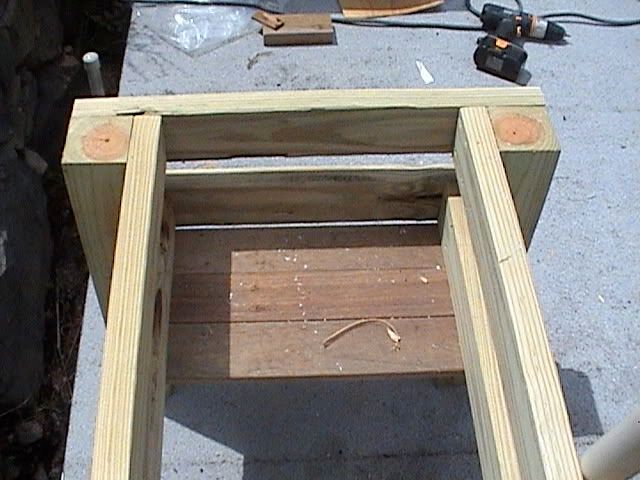
The framework is made of pressure treated wood. Most of it I scavenged, but midway through the project I capitulated and drove to the Borg and got some more lumber. Once the 2x4s were attached to the 4x4s with screws, I drilled larger holes and put in big heavy carriage bolts.

Note the shingles that form the inner surface of the planter box, preventing the pressure-treated wood of the framework from coming in contact with the soil. The gentleman doing the shingling is an old friend who is widely known in Indian music circles as a master instrument-builder. He had never worked with pressure-treated pine before (not much call for that in the world of Indian musical instruments) and commented, “You know, Warren, this is without a doubt the shittiest wood I have ever used in my life.” Indeed.
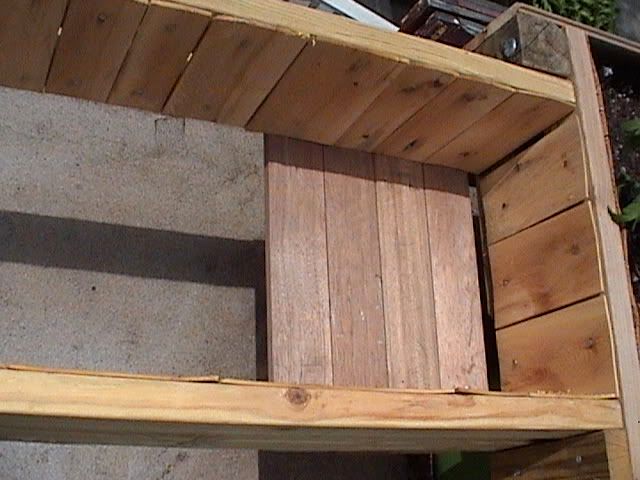
The inside of the planter boxes. The bottoms alternate between pieces of scrap mahogany decking which I was given five or six years ago, and empty spaces, where the water reservoirs will go.

Preparing the plastic tubs. Cut a hole in the middle of the lid with a hole saw; cut two slots at each end of the lid for the capillary fabric.


The bottoms of the planter boxes have heavy black plastic as a backing surface for the capillary fabric. As long as pieces of capillary fabric touch one another, they’ll transmit moisture.
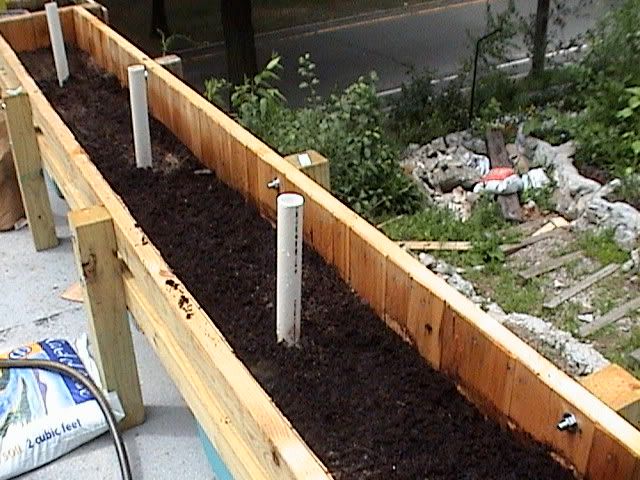
Once the tubs and capillary fabric are in place, the inside of the planters has been lined with the backing material, and the fill tubes have been positioned, I started adding dirt.
Once the dirt was in, I began adding plants. I had constructed grow-boxes in previous years and have been starting all my own seedlings in late winter. I get my seeds from Fedco. From March to June, my office looks like the Little Shop Of Horrors; there are hundreds of plants under grow lights in every corner of the room. When the weather gets a little warmer, I move them to the tiny attached greenhouse at the corner of our house, where they can get sunlight.
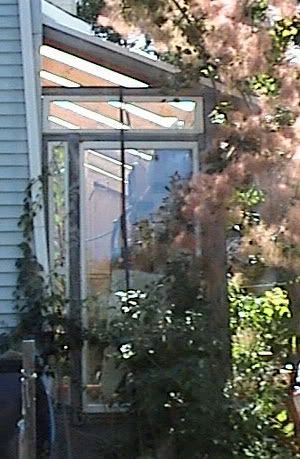
The greenhouse. I found four sliding glass doors that were being thrown out and enlisted a friend with a truck to help me get them back to the house. 18 months later, they became the main walls of the greenhouse. The smaller windows I made; I’ve been collecting glass for years. The roof material I bought from a DIY greenhouse supply outlet.
The plants like living on the garage roof. There’s lots of sun, and they get steadily fed from below, so they’re doing well. I top-water a little bit, but not too much.

I made trellises from old PVC pipe, bracketed onto the sides of the planters. Holes through the pipe support stretched garden twine, to which the plants are secured.
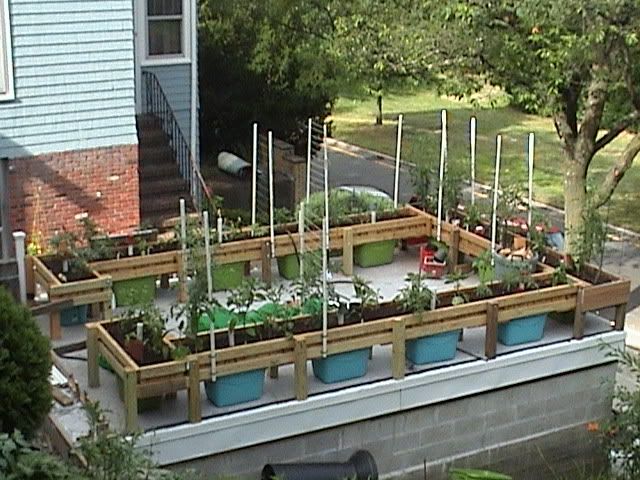
Now my daughter can walk on the garage roof, and I don’t have to worry that she’ll accidentally fall off the edge. I haven’t tried counting up all the plants, but I’m pretty sure I’ve almost doubled my growing space.
Veggie Porn:
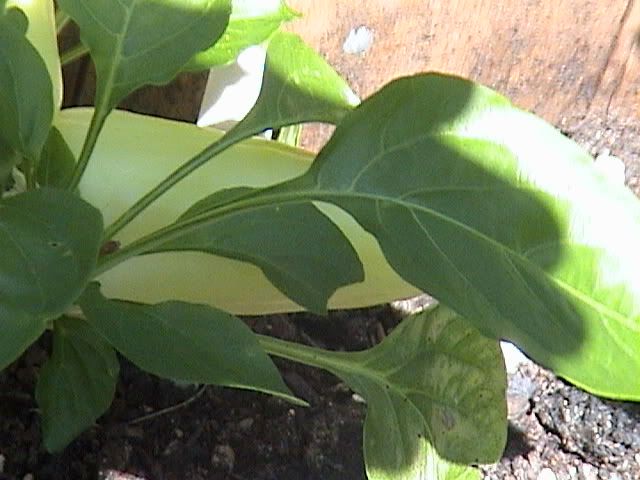
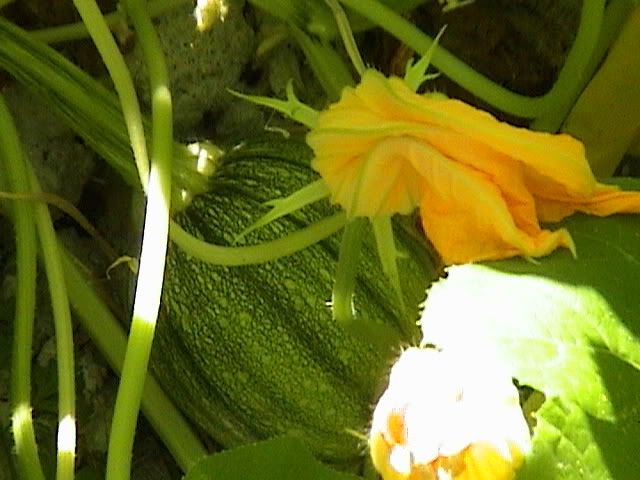
Yellow Feherozon pepper / A nascent pumpkin

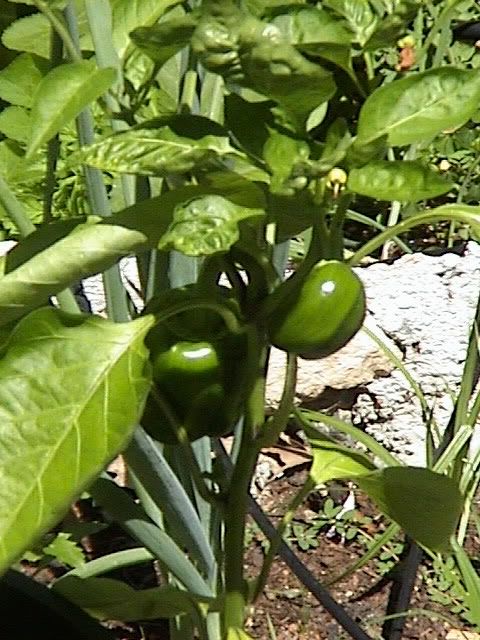
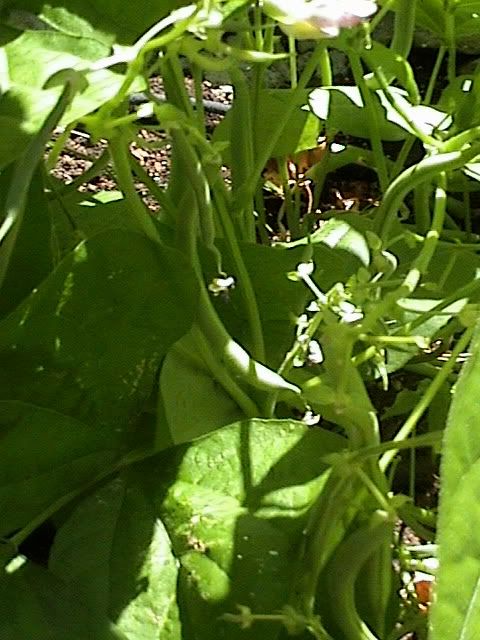
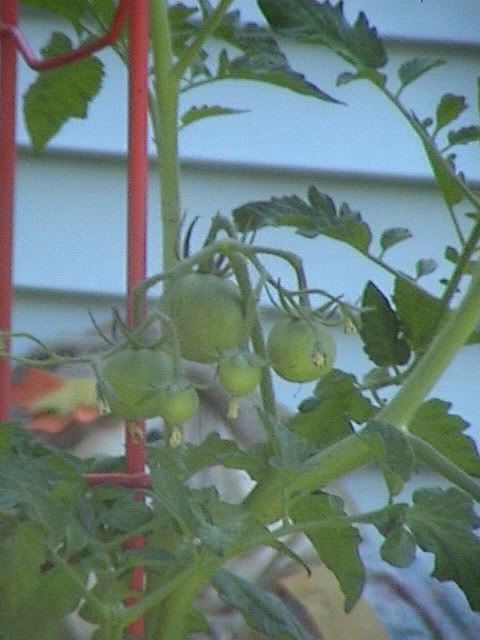
Okra / Green pepper / Green beans / Tomatoes
As I said, we’ll probably never get off the food grid entirely. But all our produce is as locally grown as we can manage. This year we’ll have enough to trade — we have friends who keep chickens, so maybe we can get some eggs for some eggplants.
There is enough to do in the garden that my daughter and her friends can come and help. She is excited at the thought of digging potatoes. In the fall we will start homeschooling/unschooling, and she’ll be pretty involved in harvest activities.
In the coming years, large parts of our economy are going to collapse in ways that will be unpredictable and often ugly. This will happen in tandem with increased weather extremes, as climate change makes itself felt more and more. Our task is twofold: we must get out of the grip of our growth-obsessed consumer culture, and we must educate ourselves in the practices of sustainability. I’ve only been doing this for a few years; I have a lot to learn.
But I’m learning it.
How about you?
What a great idea brought to fruition! Lots of work to get there, but “…months of vacant gawping…” paid off – and I know exactly what you mean; I’ve done a fair amount of vacant gawping over the years myself.
One concern: even tho’ they’re cedar, the shingles will likely rot out in a short time because they’re very thin. Cedar fence boards might have been better – they’re typically 1/2″ to 3/4″ thick and will last much longer.
Otherwise – good job!
by The Features and Benefits of the Two Types of Irrigation SystemsGardening Equipment | Gardening Equipment
[…] Mу Bіɡ Fаt Garden Project « Running Gamak: Warren Senders' Blog […]

[…] My Big Fat Garden Project « Running Gamak: Warren Senders' Blog […]